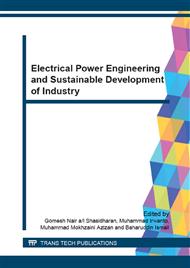p.232
p.237
p.242
p.247
p.252
p.257
p.262
p.267
p.274
Integrated DC-AC Inverter for Hybrid Power System
Abstract:
A 300 W/ 50 Hz single-phase sine wave with a 555 timer IC controller was designed, simulated, implemented and tested to investigate output AC power quality. An input 12 VDC power supply, which simulates PV-Wind power source, was connected to the inverter circuit and charge-discharge energy storage was also studied. Results of simulation show that as well as the experiment result is obtained.This paper is present the advantage ofhybrid system wind &solar together in power supply system from the integration between time andlocation. It showsthe evolution of wind-solar in single-phase sine wave power inverter and provides the structure of information and communications technology and equipment.Some main techniques such as the circuit topology and operation modes of the key link, algorithm of the intelligent control charging and discharging and so on.
Info:
Periodical:
Pages:
252-256
Citation:
Online since:
September 2015
Price:
Сopyright:
© 2015 Trans Tech Publications Ltd. All Rights Reserved
Share:
Citation:


